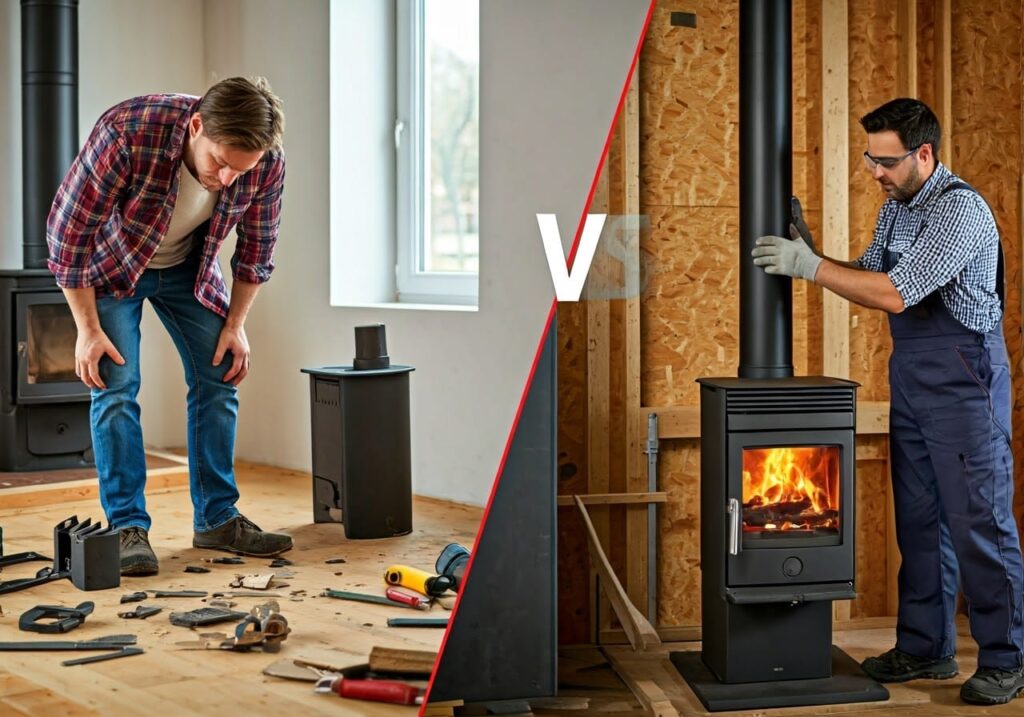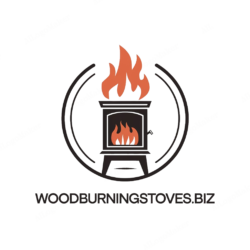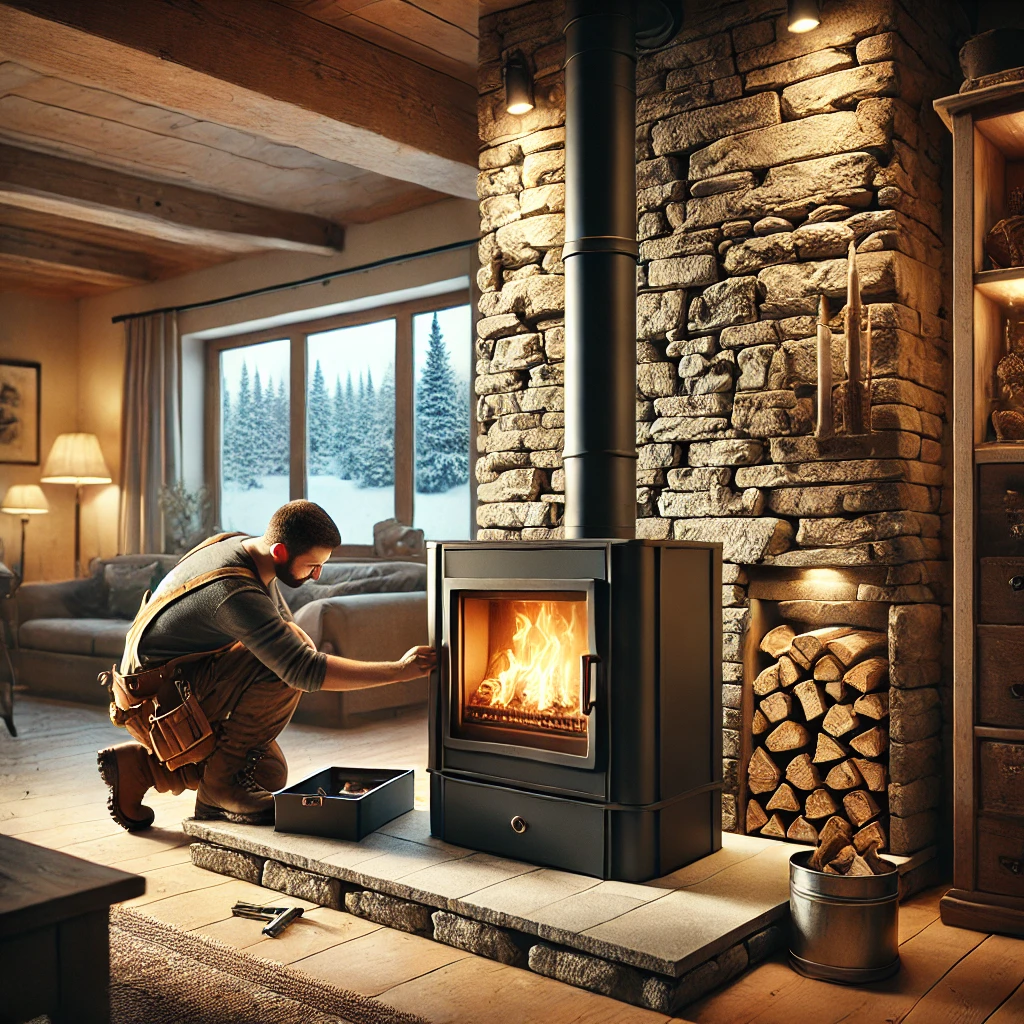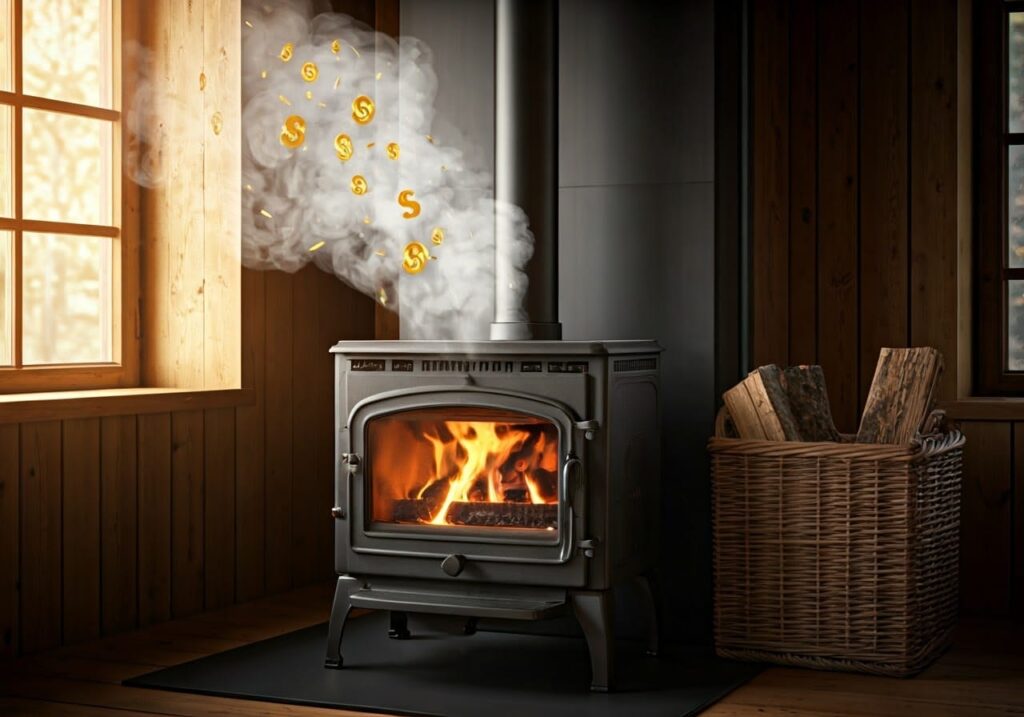When it comes to installing a wood-burning stove, homeowners have two main options: hiring a professional installer or tackling the project as a DIY endeavor. Each approach has its own set of advantages and disadvantages, and the best choice will depend on your individual circumstances, skills, and comfort level. In this comprehensive guide, we’ll explore the pros and cons of professional and DIY wood stove installation to help you make an informed decision.

Professional Wood Stove Installation
Pros:
- Expertise and Experience: Professional installers have the necessary training, expertise, and experience to ensure your wood stove is installed correctly and safely. They understand the local building codes, safety regulations, and best practices, minimizing the risk of hazards or compliance issues.
- Proper Permits and Inspections: Professional installers are familiar with the permitting process and can handle the necessary paperwork and inspections required by your local authorities. This helps to ensure your installation meets all legal and safety requirements.
- Comprehensive Service: In addition to the installation, professional installers can often provide other services, such as chimney cleaning, maintenance, and ongoing support. This can be especially helpful for homeowners who are new to wood stove ownership.
- Warranty Coverage: Many wood stove manufacturers require professional installation to honor their product warranties. Hiring a professional can help you maintain your warranty coverage and protect your investment.
- Liability and Insurance: Professional installers carry the necessary liability insurance to protect themselves and you in case of any accidents or damages during the installation process.
Cons:
- Higher Upfront Costs: Hiring a professional installer will typically cost more than a DIY approach, as you’re paying for their expertise, labor, and the overhead costs of their business.
- Scheduling Availability: Professional installers may have a busy schedule, which can lead to longer wait times before they can complete the installation.
- Lack of Hands-On Experience: If you’re interested in learning the technical aspects of wood stove installation, a professional installation may not provide the same level of hands-on experience as a DIY project.
DIY Wood Stove Installation
Pros:
- Cost Savings: Performing the installation yourself can significantly reduce the overall cost of the project, as you’ll only need to pay for the materials and any necessary tools.
- Hands-On Learning: A DIY installation allows you to gain a deeper understanding of the process, which can be valuable if you plan to maintain or troubleshoot the wood stove in the future.
- Customization and Control: By doing the installation yourself, you have more control over the project and can make any adjustments or customizations to suit your specific needs or preferences.
- Sense of Accomplishment: Successfully completing a DIY wood stove installation can be a rewarding experience and give you a sense of pride and accomplishment.
Cons:
- Safety and Compliance Concerns: Improperly installed wood stoves can pose serious safety risks, such as fire hazards or carbon monoxide leaks. If you’re not familiar with the local building codes and safety regulations, you could end up with an installation that is unsafe or does not meet legal requirements.
- Potential for Mistakes: Without the proper training and experience, DIY installers are more prone to making mistakes during the installation process, which could lead to costly repairs or even the need to start over.
- Lack of Warranty Coverage: Many wood stove manufacturers will not honor their product warranties if the installation was not performed by a professional.
- Time and Effort: DIY wood stove installation can be a time-consuming and physically demanding process, especially if you’re not familiar with the required tools and techniques.
- Ongoing Maintenance and Support: Without the assistance of a professional installer, you’ll be responsible for all the ongoing maintenance, troubleshooting, and support for your wood stove, which can be challenging for those without the necessary knowledge and experience.
Considerations for Your Decision
When deciding between a professional or DIY wood stove installation, it’s essential to carefully weigh the pros and cons based on your specific situation. Consider factors such as your level of DIY experience, the complexity of your installation, the availability of professional installers in your area, and your budget.
If you have limited experience with home improvement projects or are unsure about the local building codes and safety requirements, hiring a professional installer is generally recommended. They can ensure your wood stove is installed correctly and safely, and they can provide ongoing support and maintenance as needed.
However, if you’re comfortable with DIY projects, have the time and patience to learn the installation process, and are willing to take on the responsibility of maintaining the wood stove yourself, a DIY approach may be a viable and cost-effective option.
Regardless of your decision, it’s essential to thoroughly research the process, follow the manufacturer’s instructions, and prioritize safety throughout the installation and ongoing use of your wood-burning stove.
Wood Stove Installation Cost Comparison
Enter the costs for each component to calculate the total cost of DIY and Professional installation options.
| Cost Component | DIY Cost ($) | Professional Cost ($) |
|---|---|---|
| Wood Stove | ||
| Chimney/Vent Pipe | ||
| Installation Materials | ||
| Permits and Inspections | ||
| Labor | ||
| Safety Equipment | ||
| Post-Installation Inspection | ||
| Total Cost | $0 | $0 |
Conclusion
Choosing between a professional or DIY wood stove installation is a decision that requires careful consideration of the various factors involved. By understanding the pros and cons of each approach, you can make an informed choice that aligns with your skills, budget, and long-term goals for your home heating system. Remember, the safety and compliance of your wood stove installation should always be the top priority, regardless of whether you hire a professional or tackle the project yourself.


